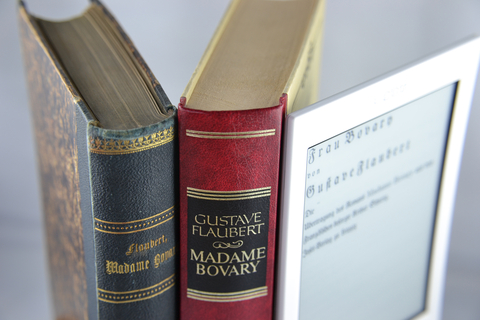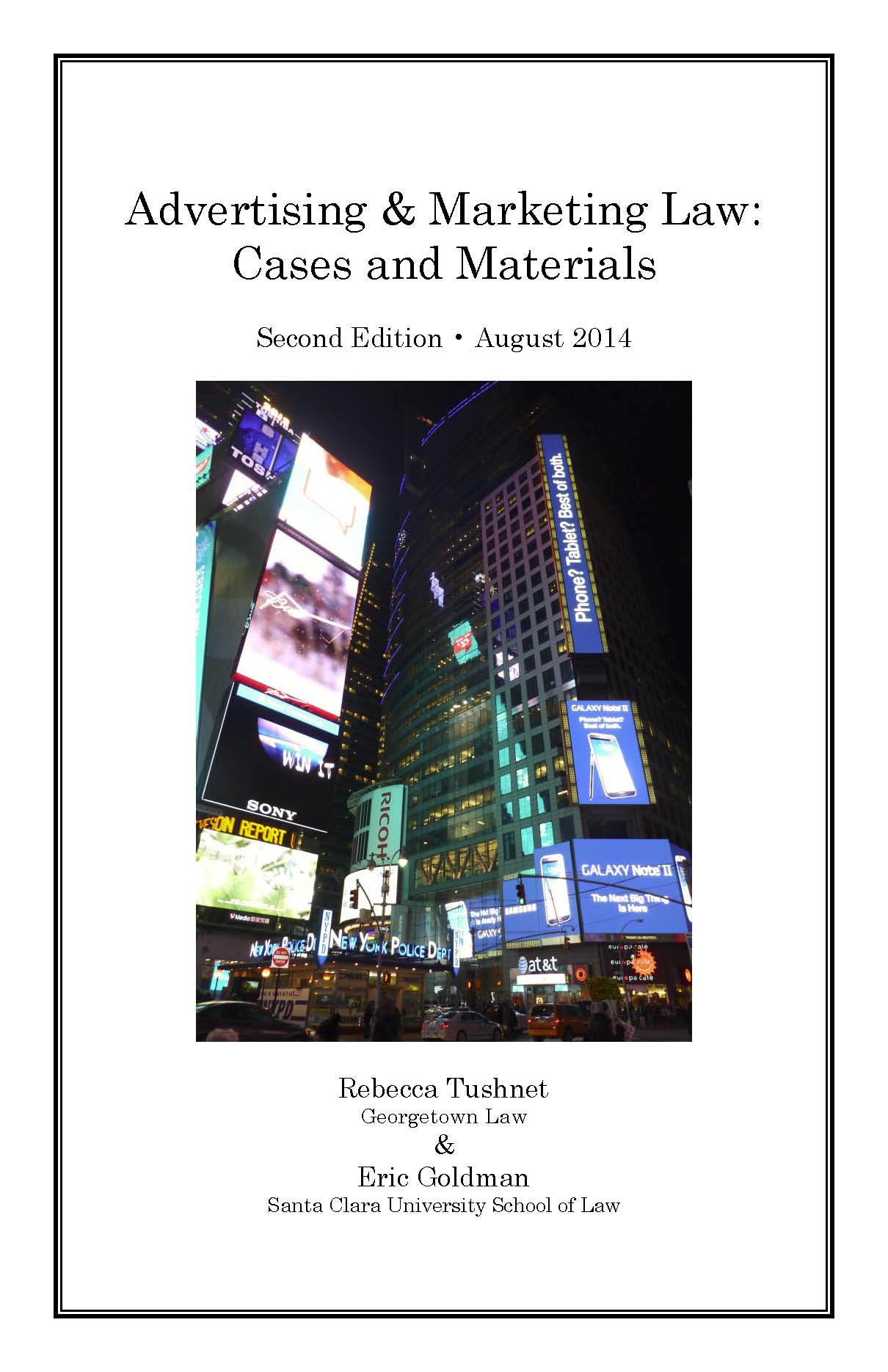Big Fish, Small Pond: How Eric Goldman Proffers Influence With Law Textbooks

The Undeniable Could-Cost-You-A-Sale Truth About Nonfiction Book Publishing

4 Key Components of White Paper Authority
Eric Goldman has a different approach to e-book publishing. A professor at the Santa Clara University School of Law, he decided to write and publish a book along with another law school professor on a subject he teaches about. He isn’t in it for the money. Rather, he saw a need for a low-cost niche textbook and took advantage of the market opportunity.
“I’ve been teaching Internet law for two decades, so I’ve been thinking about Internet publishing matters for quite some time,” he said.
The title of his e-book is “Advertising & Marketing Law: Cases and Materials”. It also has a print book component.
Goldman’s Relationship With His Co-Author
My co-author and I both blog about the book to our audiences.
“I approached a colleague at the Georgetown University Law Center about publishing a case book for advertising law. She’s the long-time expert in that field,” Goldman said. He married his knowledge of Internet law with Rebecca Tushnet’s knowledge of her subject area, and they wrote and published a 1,400-page textbook together.
In the tight niche of advertising law, there were very few textbooks on the market. Goldman said most professors teaching on the subject were preparing their own materials. So he collected the few materials that were on the market, but he discovered that none of them covered the subject thoroughly. Goldman was sitting on a goldmine.
He and Tushnet created a detailed outline, then divvied up the workload so that he wrote half of the book’s chapters and she wrote the other half.
“We kept master versions in a Dropbox where we edited them, but one of us was in charge of each chapter. All the work was done in MS Word,” he said.
Operating that way, each author would act as the other’s editor and proofreader. One would write a chapter and the other would clean up the prose, edit, and comment on the work, bringing their own knowledge of their respective disciplines to the table. Tushnet’s school has a dedicated copyeditor who helps professors clean up book manuscripts, which proved to be a huge expense-cutting asset for them.
“The copyeditor was good at fixing the graphics and taking our Word doc and converting it into the various formats,” Goldman said.
They ended up publishing the book at Scribd.
From Scribd to Amazon Via Gumroad
 Finding the appropriate venue for selling e-books proved to be more difficult than Goldman anticipated.
Finding the appropriate venue for selling e-books proved to be more difficult than Goldman anticipated.
“Each vendor had their own policies, and some were easier for buyers,” he said. “We started with Scribd because it was easier to extend the sales functionality since I was already hosting documents through them, but they kept doing things that were not in my best interest.”
What hit Goldman hard was when Scribd converted itself into a subscription service. Documents that he intended to be freely available were suddenly put behind a paywall.
“That was antithetical to Scribd’s premise, and it drove a wedge in my relationship with them,” he said. That’s when he moved to Gumroad, which he chose because of their favorable commission schedule. They take 25 cents plus 5% of the sale of each book. That meant that, for a $10 e-book, he got 92.5% of the royalties. “Scribd’s royalty share was not nearly as good, and Amazon’s is substantially worse than that.”
Eventually, Goldman and Tushnet began selling their book on Amazon, for the Kindle and in print, but they still consider Gumroad their primary sales channel. When they published the print version through CreateSpace, the manuscript was so large they had to split it into two volumes, which has its own impact on sales, proven by the fact that more people have purchased the first volume than the second one.
“The bulk of our royalties are from Gumroad because their royalty split is more favorable to us as authors and because that’s where we drive our own traffic to,” Goldman said.
Textbook Marketing for Law School Professors
 Marketing textbooks is different than marketing popular fiction and nonfiction business books. For Goldman, it was all about word of mouth and networking.
Marketing textbooks is different than marketing popular fiction and nonfiction business books. For Goldman, it was all about word of mouth and networking.
“We don’t need to get book reviews from people who would be influential to potential buyers,” Goldman said. “We don’t depend on promotional placement at Amazon to dictate our sales, so we can control our marketing more easily. The bulk of our sales come when an instructor adopts our casebook and assigns it to their students.”
Because the community of advertising law professors is small, anyone who is considering teaching such a course is referred to Goldman and Tushnet. Because of that, they haven’t spent any money on marketing. Instead, they engage in content marketing. However, Goldman is quick to point out that their own efforts at content marketing are less canned and more organic than the typical book author’s because, as law school professors, they’d be generating that content anyway. They’re not doing it to sell books.
“My co-author and I both blog about the book to our audiences,” Goldman said. He writes the Technology & Marketing Law Blog. Tushnet writes the 43(B)log. Both blogs are recognized by the ABA Journal as top 100 law blogs (blawgs). “I also maintain a master e-mail list of anyone who has asked for a review copy.”
He and Tushnet strive to update their law textbook every two years. When they do, he sends an e-mail to his list to notify past purchasers of the new edition. That, and word of mouth, drive the bulk of their sales. Goldman and Tushnet are also both active on social media, which keeps them connected to the advertising law community, and that also means that many of their sales are not necessarily to students or professors in law schools, but also to attorneys in practice and business people interested in the topic.
Producing a Textbook: How Much Is It About Quality?
We don’t need to get book reviews from people who would be influential to potential buyers. The bulk of our sales come when an instructor adopts our casebook and assigns it to their students.
They also didn’t go through the trouble of seeking permissions for the artwork they use throughout the book. Goldman explained why.
“It’s fair use in the context of our book,” he said. “Because we’re publishing actual court decisions, it’s important to understand those decisions, which you can’t do without seeing the ads at issue.”
Goldman said they could have tried to explain what the ads look like, but to understand them within the context of the legal concepts they’re talking about, you’d have to see the ads and that requires depicting them alongside the legal decisions pertaining to them.
Another element of publishing that makes casebooks different from popular titles is pricing. Law school students are used to paying $200 for a textbook. In Goldman’s and Tushnet’s case, they pay $11.50 for a digital copy.
“The casebook market is tricky,” Goldman said. “Teachers make all the decisions. Students are required to buy the book but don’t get to negotiate price. It’s easy for authors to raise prices on casebooks because students don’t have a choice. We feel like we should give them a fair deal.”
Despite some newer casebooks being published and offered for free, Goldman said he feels like he and Tushnet have a good economic deal. And though his textbook is listed in at least one Amazon category best seller list, he doesn’t care.
“Our heads are in a totally different place,” he said. “Our wins occur when professors want to use our book in their classes.”
To date, the 2014 edition of “Advertising & Marketing Law: Cases and Materials” has sold 743 copies on Gumroad. That represents $8,500 in revenues. Certainly not a windfall, but Goldman’s main line of work is teaching law, not publishing books.
“For us, the book is going to be one of the ways we shape the advertising industry,” he said. “Through the book, we reach our students plus other students around the nation. It increases the impact on the community compared to other things that we do because it reaches so many more folks.”
And I might add, presumably for many years to come. You can’t put a price on that kind of influence. Not even for law school professors.
 Are you ready to boost your authority? Looking for ways to expand your reach and deliver the best content for your niche audience? Download my free report, “14 Types of Authority Content“. Learn the 14 types of content that will keep your audience coming back for more and instantly make you an authority they can rely on.
Are you ready to boost your authority? Looking for ways to expand your reach and deliver the best content for your niche audience? Download my free report, “14 Types of Authority Content“. Learn the 14 types of content that will keep your audience coming back for more and instantly make you an authority they can rely on.
* Trust me, I’m no fan of spam either. You can trust me with your contact information. I’ll use it only to deliver your special report, and occasionally may send out special offers or communicate with you on building authority with content. You can opt out any time.
Order a copy of Eric Goldman’s casebook
Advertising & Marketing Law: Cases and Materials



